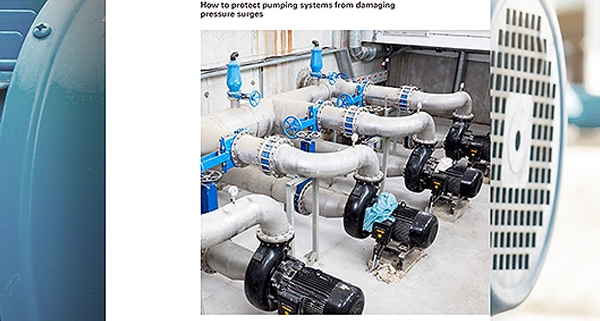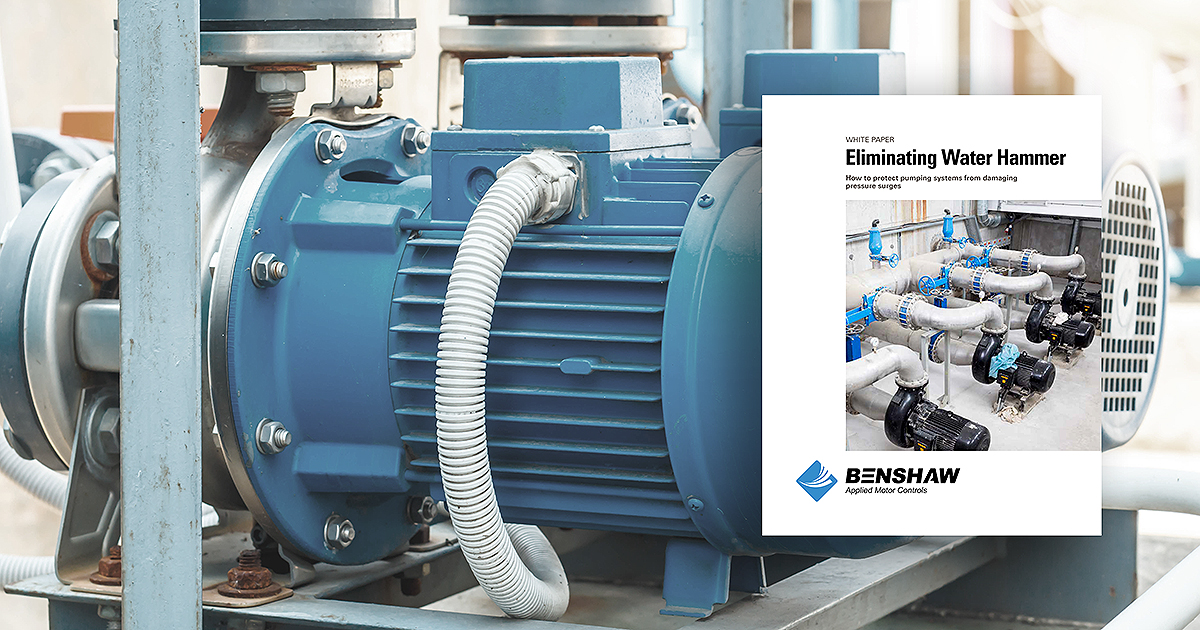Eliminating Water Hammer
Water hammer is a term used to describe pressure surges within a piping system. There are a range of mechanisms and triggers for water hammer, and having a clear understanding of what is causing the phenomenon in a particular installation is key to identifying the right solution.
Water Hammer Mechanisms and Triggers
The mechanics of water hammer are actually quite simple. One cause is when the leading edge of a fluid column in a pumping system encounters a blockage, a common example being a suddenly closed valve. When this happens the flow of the water at the leading edge is instantly halted, but the fluid behind is still moving and starts to compress. Because of this compression, a small amount of fluid continues to enter the pipework even though the water at the leading edge has stopped moving.
The kinetic energy of the water in the system is converted to pressure energy as the water compresses. Logically, this pressure energy created cannot continue past the blockage in the system. Instead, the pressure wave generated by the compression of water in the pipe will travel back upstream.
The other primary cause of water hammer is water column separation and closure. This occurs when the column of liquid water within a piping system is separated and subsequently closes again, generating a damaging shockwave.
Regardless of the cause, the increased pressure generated by the water hammer phenomenon can cause significant damage to any system not designed to accommodate such stresses, resulting in burst pipes, damaged valves and more.
Solving the water hammer problem requires either mitigating its effects or preventing its occurrence altogether. To this end, there are a number of solutions to consider when designing a pumping system.
Water Hammer Solutions
Pressure tanks, surge chambers or similar accumulators can all be used to absorb pressure surges and are useful tools in the fight against water hammer. That said, preventing the pressure surges in the first place is often a better strategy. Electronic motor control devices such as soft starters and variable speed drives can be used to control the speed of the pump during starting and stopping. This allows for a more gradual increase or decrease in pump speed (and hence of flow and head / pressure) to prevent water column separation, flow reversal and sudden check valve closure.
Benshaw has developed a new white paper titled “Eliminating Water Hammer” that explains the damaging effects of water hammer and how Benshaw solid state starters and variable frequency drives can be used to minimize or eliminate the condition. Click here or visit the Benshaw Document Library to view/download this document.
Electrical Solutions to Mechanical Problems
Benshaw is widely recognized as a leading provider of applied motor controls and technologies. We thrive on complex applications and work diligently to bring cost-effective, advanced motor control and protection solutions to our customers. With operations spanning the globe, Benshaw now offers the broadest family of globally supported, globally certified, low and medium voltage soft starters in the industry.






